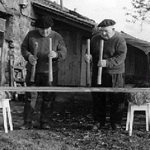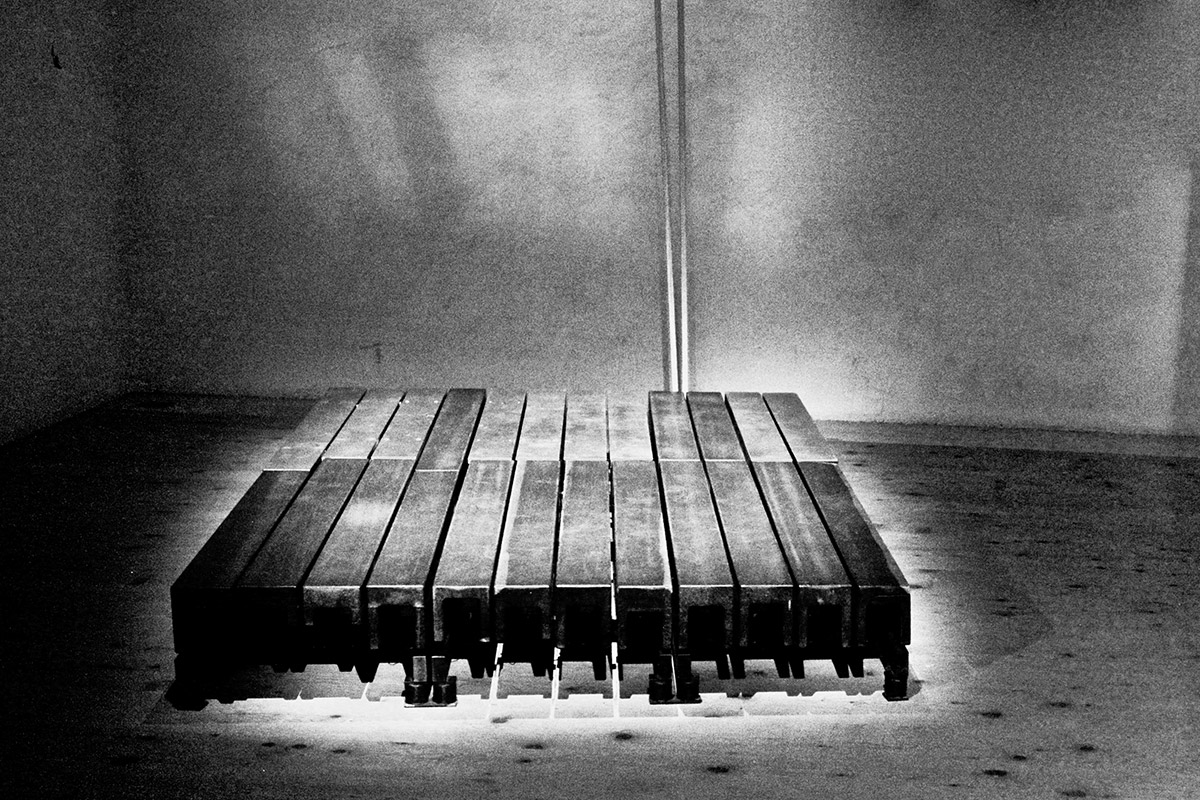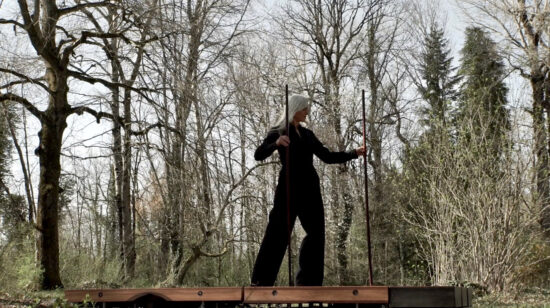 The Xala is a unique instrument which is played by dancing. It is a magical, resonant body with which, Ania Losinger, creates a fascinating synthesis of music and dance.
The Xala is a unique instrument which is played by dancing. It is a magical, resonant body with which, Ania Losinger, creates a fascinating synthesis of music and dance.
The artist brings this primarily acoustic instrument to life using flamenco shoes and two long poles.
New ideas and artistic concepts have been developed during Ania’s long-term collaboration with musician and composer, Mats Eser, which began in 2005 and gave rise to a series of compositions, concerts and music-theater productions that are currently being performed internationally.
Today, three versions of the Xala exist which differ in size and timbre. Since its invention in 1998/99 they have been built by the inventor and instrument maker, Hamper von Niederhäusern.
More about the Instruments
The Name Xala
 The name XALA is derived from the Basque percussion instrument Txalaparta. A Txalaparta consists of two or more wooden boards which are laid next to each other and played using thick poles held perpendicularly by two people who face each other. Except for its similar sounding name and the vertically held staves the Xala has nothing directly to do with the Basque instrument.
The name XALA is derived from the Basque percussion instrument Txalaparta. A Txalaparta consists of two or more wooden boards which are laid next to each other and played using thick poles held perpendicularly by two people who face each other. Except for its similar sounding name and the vertically held staves the Xala has nothing directly to do with the Basque instrument.
Xala generally stands for an instrument built of chiming bars and sounding plates made of wood, aluminum, stone, glass or concrete which can carry a person, resonate acoustically and which can be transported or installed permanently.
Hamper von Niederhäusern
 Hamper von Niederhäusern, borin in 1946 in Burgdorf (CH), makes his first experiences in working with his hands in Pohlern (Stockental BE) in his grandfather’s workshop and in the fields and dreams of one day building an instrument. He learns smithing and artistic iron work in Canton Bern’s technical school. He owns his own smithy in Kaiserstuhl after Bern, Freiburg and Zürich. Here he designs and builds furniture and metallic parts for construction. In 1986, after an autodidactic vocational training he begins to build the first tuned sounding boards for xylophones and marimbas. He opens his own studio for instrument building VONIE, which fulfills the requirements for the development and construction of the first XALAs.
Hamper von Niederhäusern, borin in 1946 in Burgdorf (CH), makes his first experiences in working with his hands in Pohlern (Stockental BE) in his grandfather’s workshop and in the fields and dreams of one day building an instrument. He learns smithing and artistic iron work in Canton Bern’s technical school. He owns his own smithy in Kaiserstuhl after Bern, Freiburg and Zürich. Here he designs and builds furniture and metallic parts for construction. In 1986, after an autodidactic vocational training he begins to build the first tuned sounding boards for xylophones and marimbas. He opens his own studio for instrument building VONIE, which fulfills the requirements for the development and construction of the first XALAs.







